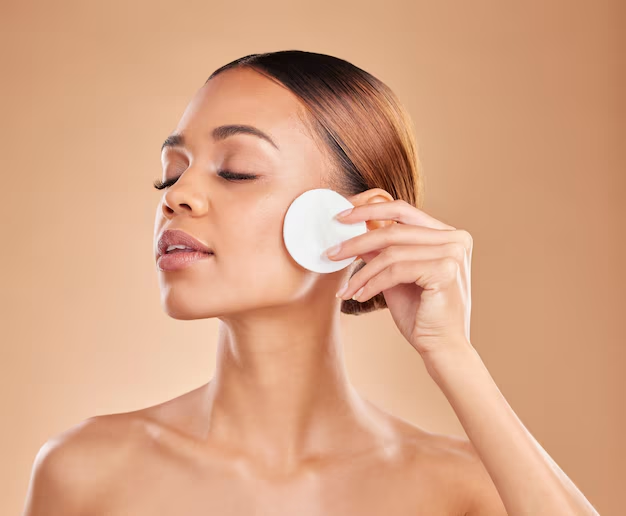Taking off your makeup at the end of the day is just as important as applying it. In fact, proper makeup removal is one of the cornerstones of healthy skin. Leaving traces of makeup on overnight can lead to clogged pores, dullness, irritation, and even breakouts. But removing it the wrong way—using harsh scrubbing or unsuitable products—can do more harm than good.
In this guide, you’ll learn the best techniques and products to gently and effectively remove makeup without damaging your skin barrier.
Why Proper Makeup Removal Matters
Even lightweight or “natural” makeup contains pigments, oils, and ingredients that can accumulate on your skin. If not removed properly, they can:
- Cause pore congestion and breakouts
- Lead to dull or uneven skin texture
- Weaken the skin’s protective barrier
- Increase the appearance of fine lines and dryness
That’s why building a consistent, gentle makeup removal routine is essential for all skin types.
Step 1: Start With Clean Hands
Always wash your hands before touching your face. This simple step prevents transferring dirt and bacteria to your skin while removing makeup.
Use a mild soap and warm water, then dry your hands with a clean towel.
Step 2: Use a Dedicated Makeup Remover
Different types of makeup require different removal strategies:
For eye and lip makeup:
- Use a bi-phase makeup remover (oil + water formula)
- Or use micellar water on a soft cotton pad
- Press gently on closed eyes or lips for a few seconds before wiping
For face makeup:
- Use micellar water, cleansing oils, or balms
- Choose a formula suitable for your skin type
- Avoid alcohol-based removers—they can dry and irritate
Micellar water is great for sensitive skin, while oil-based products work better for waterproof or heavy makeup.
Step 3: Try the Double Cleansing Method
Double cleansing ensures thorough makeup removal and deep skin cleansing without stripping natural oils.
Step 1: Oil-Based Cleanser
- Massage into dry skin to break down foundation, sunscreen, and sebum
- Emulsify with a bit of water, then rinse
Step 2: Water-Based Cleanser
- Use a gentle, non-foaming or low-foaming face wash
- Removes sweat, dirt, and any leftover residue
This two-step process leaves your skin clean, soft, and ready to absorb your skincare products.
Step 4: Be Gentle Around the Eyes
The skin around your eyes is delicate and prone to damage.
- Never rub or tug
- Use soft cotton pads or reusable cloths
- Always pat, press, and glide gently
If mascara is stubborn, soak your pad in micellar water and hold it in place for 10–15 seconds before wiping.
Step 5: Rinse With Lukewarm Water
After removing makeup, rinse your face with lukewarm water to wash away any remaining residue. Avoid hot water—it can strip your skin’s moisture and cause irritation.
Use a clean, soft towel to pat (not rub) your face dry.
Step 6: Follow Up With Toner (Optional)
A toner can help balance your skin’s pH and remove any last traces of makeup. Look for toners with hydrating ingredients like rose water or glycerin, especially if your skin is sensitive.
Avoid toners with alcohol or harsh astringents—they’re not necessary for daily use and can disrupt your skin barrier.
Step 7: Moisturize Immediately
Makeup removal, even when done gently, can leave your skin slightly dry or tight. Replenish hydration right away.
- Use a light gel moisturizer for oily skin
- A cream-based moisturizer for dry skin
- Or apply a hydrating serum first, then a moisturizer
If your skin feels irritated or inflamed, try using aloe vera gel or a soothing overnight mask.
What About Makeup Wipes?
Makeup wipes are convenient—but not ideal for regular use.
- They often contain fragrances and preservatives that irritate the skin
- Rubbing wipes across the face can cause microtears and redness
- They don’t clean as effectively as cleansers
If you must use wipes, follow up with a proper face wash. Reserve them for travel or emergencies.
Don’t Forget Your Hairline and Neck
Makeup often reaches beyond your cheeks and forehead. Clean the edges of your face, hairline, and neck thoroughly. These spots are easy to forget and can accumulate product and sweat.
Frequency and Consistency Matter
- Remove makeup every single day, even if it’s minimal
- Never sleep with makeup on—it interferes with the skin’s overnight regeneration
- Be consistent and gentle for long-term skin health
Build Your Makeup Removal Kit
Here’s a basic, gentle makeup removal toolkit for daily use:
- Micellar water or bi-phase remover
- Cleansing oil or balm
- Gentle foaming or cream cleanser
- Soft cotton pads or reusable cloths
- Lightweight toner (optional)
- Hydrating moisturizer or serum
Clear Skin Starts at Night
The best skincare results come not just from what you apply—but from what you remove. Proper makeup removal is an act of care and respect for your skin. It gives your pores space to breathe and allows your skincare products to work effectively.
Make it a part of your nighttime ritual, and over time, you’ll notice smoother texture, fewer breakouts, and a healthier glow—all from the simple habit of removing your makeup the right way.
